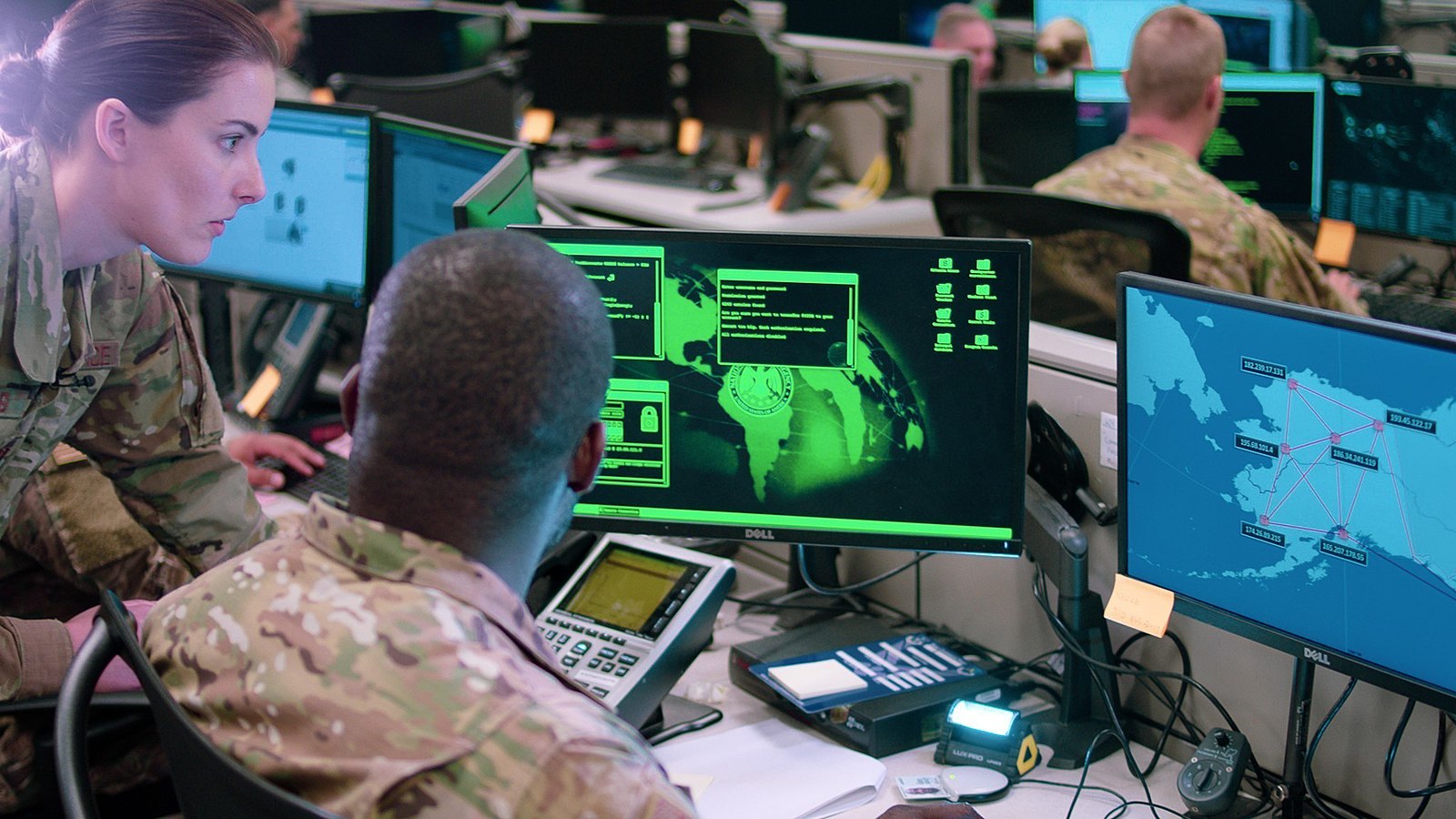The New Defense Department Plan to Curb Civilian Harm: A Bold Blueprint for Change
The new plan will protect civilians while preserving military effectiveness.

Published by The Lawfare Institute
in Cooperation With

The new U.S. Department of Defense Civilian Harm Mitigation and Response Action Plan (CHMR-AP) is an audacious and comprehensive effort to enhance compliance with the law of armed conflict (LOAC) and address concerns that the department has not done enough to safeguard civilians. As outlined by planning team members Dan Stigall and Anna Williams, and analyzed by Marc Garlasco, the plan will develop new institutions within the Defense Department, including a Center of Excellence “to expedite and institutionalize the advancement of knowledge, practices, and tools for preventing, mitigating, and responding to civilian harm.”
It will also modify targeting protocols in future armed conflicts, prioritizing the acquisition of additional information, the integration of this information into the targeting process, and the implementation of procedures to enhance the quality of attack decisions. As a result, the department’s plan will ultimately mitigate the risks to civilians resulting from U.S. and coalition-partnered combat operations.
Implementing this ambitious plan will permanently change the nature of U.S. warfighting. It is an effort that reflects a profound transformation of the U.S. military in the years since the end of the Cold War—that is, an increasing understanding of and emphasis on the inherent obligation to arm commanders with every feasible tool to ensure that their decisions comply with international law. The plan also addresses the relationship between such compliance, operational success, and strategic legitimacy. To frame this transformation, we begin with a brief flashback to one of our (Corn’s) first experiences as a soldier in the lead-up to the U.S. invasion of Panama.
The Panama Intervention: A Reflection
In 1987, I (Corn) served as a tactical intelligence staff officer for an airborne infantry battalion in Panama. Relations with Gen. Manuel Noriega and the Panamanian Defense Forces had decayed to the point that a military confrontation seemed increasingly likely. With the aid of Cuban special forces, Noriega’s forces began operations to probe the security of several U.S. military bases in the former Panama Canal Zone, most notably an enormous Navy fuel-tank “farm” spread throughout the dense jungle along the Panama Canal on what was then the Rodman Naval Base.
My battalion, the 1st of the 508th Parachute Infantry, was suddenly involved in low-level and somewhat routine confrontations with these forces. The U.S. Navy was sufficiently concerned to request the deployment of a reinforced rifle company of U.S. Marines from Camp Lejeune, North Carolina. Teams from the U.S. 7th Special Forces Group, stationed on the other side of the Panama Canal, were deployed into the jungle to monitor these probing operations.
In retrospect, those days seem surreal. In a display of mixed-use land management, a mortar platoon commandeered the parade field in front of the battalion’s headquarters building to fire illumination rounds in support of Special Forces observation posts. American troops were armed with live ammunition and deployed into the jungle to support these teams when they reported close contact with heavily armed intruders. On several occasions, the confrontations erupted into combat.
During the Panama intervention, codenamed Operation Just Cause, there was no sign of a judge advocate general (JAG) officer, a military lawyer who advises on the legality of actions taken in combat. Commanders of U.S. forces in Panama heeded rules of engagement set by senior military leadership. However, I heard little or nothing about constraints imposed by LOAC principles. Whatever the LOAC had to say, Operation Just Cause turned whole neighborhoods in Panama City into rubble—including areas housing many of Panama’s impoverished citizens.
Although the LOAC was not a principal topic of conversation among U.S. forces in Panama, something about the subject interested me. During the Military Intelligence Officer Basic Course, we each received pamphlets entitled “Your Conduct and the Law of War”—small booklets featuring caricatures displaying compliance with international humanitarian law. For example, the pamphlet included cartoon images of a wounded enemy pilot descending by parachute alongside a note not to shoot the pilot unless he resisted capture upon landing. But notably, the pamphlet’s cartoon images bore little resemblance to the devastation in Panama City. The years since the Panama intervention have seen ups and downs in the relationship between U.S. forces’ operations and LOAC principles. As we shall see, the Pentagon has crafted its new plan for the mitigation of civilian harm to solidify that relationship now and in the future.
A Brief Summary of Relevant LOAC Rules and Principles
Cartoons aside, the law of armed conflict, as Michael Schmitt has noted, rests on the balance of military necessity and humanity. That balance entails three key principles: distinction, proportionality, and precautions in attack. The principle of distinction bars the targeting of civilians in an armed conflict. In determining who is a lawful target, an attack planner must gather and analyze all “reasonably available” information. Some information might be accessible to a commander in the moment or within a reasonable period of time, depending on how time sensitive the attack decision may be. Gathering more information might require additional time. The decision-maker need not be absolutely certain of the identity of a proposed target—that absolute certainty is rarely possible in the fog of war. However, any attack decision must have a level of certainty that is deemed to be reasonable under the circumstances.
The rule of proportionality is part of a broader prohibition on indiscriminate attacks that have resulted in immense civilian suffering due to a tenuous relationship with demonstrable military necessity. This rule prohibits attacks that a decision-maker anticipates will result in an “excessive” measure of injury to civilians and/or destruction of civilian property in relation to the concrete and direct anticipated military advantage of the offensive. Under the rule of proportionality, permissible incidental injury and collateral damage will turn on the ex ante, or forecasted, assessment of these two considerations. For example: Some level of harm to civilians—call it X, would be reasonable and not excessive in the execution of an attack on a high-level commander of an enemy force, given the expected tactical gain of the strike. In contrast, a lower level of collateral harm—call it Y (when Y < X)—would be reasonable for an attack against a “foot soldier” of an opposing force.
Under the rule of precautions in attack, attack decision-makers must implement “all feasible” measures to avoid civilian harm. Depending on time and other factors, such precautions would include taking additional measures to verify the nature of the target and minimize the risk of collateral damage, such as issuing warnings to the civilian population, adjusting the time of attack, selecting an alternate target that reduces civilian risk, or choosing an alternate weapon or tactic for a military objective. Precautions should also be understood to include consultation with senior officers who may have the capacity to expand available resources and enable more effective attack judgments. In a broader sense, precautions include measures that refine the distinction and proportionality judgments by maximizing the commander’s access to relevant information. Precautions are not just substantive measures but also include the processes that frame attack decisions.
As Asaf Lubin notes, the LOAC also requires that states use “constant care” to avoid harm to civilians and civilian objects—a rule that often prompts debate, as the contours and temporal scope of this duty are the subject of much dispute. But all agree that a state supervising its forces in an armed conflict must act in good faith. At a bare minimum, the state must train its forces to comply with LOAC rules and principles. One of us—Margulies—has argued that the state has additional duties under its constant care obligation. For example, if civilians are harmed because of avoidable snarls in a state’s distribution of technology—such as an armed force’s hindered access to high-resolution video due to supply chain issues—the state should have a plan in place to minimize such disruptions in the future. In the uncertainty of war, disruptions may recur. But the state should make all reasonable efforts it can to minimize such disruptions.
When credible reports surface that a violation of the LOAC has occurred, a state has a duty to conduct an independent and effective investigation. Pursuant to the LOAC, the criterion of independence does not require that an investigator be a civilian or someone outside the military, as long as the investigator had no role in the decisions leading up to the challenged attack. An effective investigation should consider all reasonably available sources of information, including data from all units in the military and security forces, as well as open-source information and information provided by civil society groups (nongovernmental organizations, or NGOs). Moreover, while no investigator can complete their task overnight, unreasonable delays undermine the effectiveness of the organization, prompting concerns about foot-dragging, thwarting of accountability, and the disappearance of evidence.
Past U.S. Efforts to Implement LOAC Principles
U.S. policies and procedures have in many ways sought to comply with or even surpass LOAC protections for civilians in recent years. For example, as Corn has explained, the U.S. military implemented restrictive rules of engagement in Afghanistan and elsewhere that reduced permissible civilian casualties below the level that the rule of proportionality requires. Preplanned strikes often used a collateral damage level of 1 or 2, meaning that any planned strike in which the planner expected damage above that figure would require authorization by a senior commander. In addition, unlike the experience that Corn has described regarding the U.S. intervention in Panama, planned strikes have involved extensive advice from military lawyers, as Michael Schmitt and John J. Merriam have described in discussing the Israeli Defense Forces’ targeting process. As our friend and retired JAG officer Todd Huntley observed recently, U.S. (and many coalition) commanders expect and demand extensive integration of law and legal expertise in all phases of their operations. But as noted in both Huntley’s commentary and this analysis by Corn and Michael Meier several years ago, maximizing compliance with LOAC principles, especially in relation to the conduct of hostilities, requires more extensive and innovative efforts to arm commanders with the expertise related to all aspects of civilian risk mitigation, not just the legal framework applicable to targeting operations.
Flaws in U.S. Implementation
Unfortunately, the substantial evolution of procedures to ensure LOAC compliance has been matched by an increasingly complex battlespace—a complexity that is almost certainly going to grow even more challenging in future conflicts. And, of course, no military is perfect; violations occur. But such violations take on increased gravity and generate justifiable concern when a military institution is fully committed to compliance. It is therefore important that the Pentagon’s new plan is in part responsive to the acknowledgment that such “imperfections” in U.S. operations exist. Investigations and external reporting have pinpointed the negative effects of procedural deficits in targeting, the influence of cognitive flaws such as confirmation bias, inconsistent access to technology to maximize situational awareness, and delayed and incomplete investigations.
Illustrating flawed compliance with procedures, targeting decisions sometimes relied excessively on claims that a unit of U.S. or allied forces had to act in self-defense against an imminent threat. As Corn described, on occasion units eager to go on offense against U.S. adversaries such as the Islamic State have been found to cite self-defense pretextually. Playing the “self-defense card” consequently resulted in what appears to have been overzealous uses of force that bypassed rules-of-engagement constraints on non-self-defense targeting and processes intended to mitigate civilian risk.
In addition, spotty access to technology such as high-resolution video has at times undermined the accuracy of U.S. targeting. According to the U.S. Air Force’s inspector general, poor video quality impaired the identification of civilians, including seven children, in the target zone of the mistaken U.S. strike in Kabul in August 2021. While supply chain issues can occur in war and peacetime, the U.S. military has yet to announce a plan to reduce the risk that such disruptions will compromise a commander’s ability to maximize situational awareness in complex tactical environments such as densely populated urban areas. Similarly, as reports by the RAND Corporation and the Center for Naval Analysis have indicated, applications of artificial intelligence (AI) have focused more on attacking adversaries than on providing information to planners on matters such as the location of vital civilian infrastructure, including sewer systems and water supplies.
Cognitive flaws such as confirmation bias also appear to have negatively influenced the quality of attack judgments. Confirmation bias—as Nobel Prize winner Daniel Kahneman explained with co-authors Olivier Sibony and Cass Sunstein in their study of human cognition—is the human tendency to interpret all evidence as confirming the decision-maker’s current thesis. The bias holds even if new evidence is either neutral or inconsistent with the decision-maker’s current view. In the August 2021 Kabul strike, U.S. forces mistakenly designated an employee of a U.S. aid agency as a would-be terrorist bomber. Attack planners fixated on video footage showing the proposed target taking bags out of his vehicle’s trunk during various stops. A suicide bomber at the Kabul airport a few days earlier had exchanged bags with accomplices prior to his attack, affording some explanation as to why this observation was given such decisive weight. However, handling bags in a car trunk is at best neutral evidence that the baggage handler is a terrorist. In a large city such as Kabul, New York, or Washington, D.C., thousands of people move bags from vehicles every day. To view neutral evidence of this kind as support for the designation of a terrorist is a classic demonstration of confirmation bias.
Finally, instead of being effective, investigations have been riddled with delays and the failure to collect all relevant evidence. Gen. Michael Garrett’s recent report on a 2019 strike in Baghuz, Syria, that may have killed dozens of civilians indicated that “[n]umerous policy compliance deficiencies at multiple levels of command led directly to numerous delays in reporting” the Baghuz incident. As Garrett acknowledged, such egregious delays diminish public trust in the independence and effectiveness of investigations. While Garrett found that the targeting cell in this strike had not violated the LOAC, the problems in the investigation do not inspire confidence.
At the same time, delay is certainly not the only enemy of legitimacy. Indeed, sometimes the pressure to reach a rapid resolution leads to flaws in the investigative process that undermine credibility and may also negatively affect the service members involved in the incident. For example, the RAND study that helped inspire the department’s new CHMR-AP plan also recounted investigators’ failure to collect evidence from inside the military, such as video of a strike, as well as a failure to work effectively with external stakeholders, including NGOs. Like attack decisions themselves, striking the right balance between haste and deliberation, or transparency and accuracy, is no easy challenge for battlefield investigators. But recognizing this challenge and implementing consistent procedures to respond will ultimately enhance the legitimacy of such investigations, produce more meaningful lessons learned, and contribute to more effective LOAC compliance.
The Pentagon’s New Plan for Mitigating Civilian Harm
As a remedy for these problems and a pathway toward good-faith compliance with the LOAC, the Defense Department’s new plan is itself an important precautionary measure. If it works as intended, it will expand the commander’s aperture of relevant and available information related to operational implementation of LOAC rules and principles. In so doing, CHMR-AP will enhance the reasonableness of attack judgments across operations.
Consider the plan’s establishment of a Center of Excellence on reducing civilian harm, set to be a home for discerning and distributing lessons learned on mitigation of civilian harm. The RAND report indicated that the U.S. military often approached potential lessons in a haphazard way that diminished their impact. As an institution with a defined role, the center should provide a more methodical approach.
Structural innovations also figure in two other key Defense Department steps: (a) “civilian environment teams”—the department will place teams of experts in infrastructure and urban systems in combatant commands, such as Central Command, to provide information to targeting cells on issues such as second-order effects of attacks on sewers and water supplies; and (b) red teams—groups that will “explore … alternatives” to a particular attack, such as either consulting with senior officials or devising an attack with different weapons that will pose less serious risks to civilians. Each of these steps will be important for defusing the cognitive bias that has plagued U.S. targeting efforts in the past. These ideas are consistent with the analysis by Corn and Meier (in the article referenced above) on reconfiguring targeting teams to include civilian-risk mitigation officers.
In addition, the CHMR-AP highlights the promise of technology. It calls for new uses of artificial intelligence (AI) that can develop information about civilian patterns of life. Artificial intelligence and machine learning can have other valuable uses, as the Pentagon’s “Responsible AI” pathway suggested in June and the Center for Naval Analysis report co-authored by civilian harm reduction expert Larry Lewis noted earlier. AI is not just for offensive weapons; its most important use can be in minimizing risks to civilians.
Finally, in another structural innovation, the CHMR-AP plan includes a provision for civilian harm assessment and investigation coordinators, who will be responsible for ensuring adherence to a uniform approach to investigations. Reports in the New York Times and RAND have noted that, in the past, the U.S. military’s investigations have often been spotty and reliant on a narrow range of information—sometimes not even including information from the military’s own sources—let alone the data obtained by civil society groups. A plan for careful and consistent coordination of investigations will build public trust and facilitate the dissemination of lessons learned.
Caveats Regarding the Department’s Plan
While there is much to commend in the new plan, some caveats are in order. First, the plan does not address past overreliance on unit self-defense as defined in U.S. Standing Rules of Engagement. Since the pretextual invocation of this authority led to what were almost certainly avoidable civilian casualties in more than one incident, focus on the issue would have been appropriate. Indeed, while it is fair to say that tacit admissions about the influence of confirmation bias and other factors are an integral part of the backdrop for the department’s plan, both internal and external stakeholders could have benefited from more specific acknowledgment of past mistakes.
As courts and lawyers know, guidance from legal rules is often most effective when it includes tangible examples. Not everyone knows the meaning of confirmation bias, nor can everyone diagnose the problem when they encounter it. Confirmation bias is so insidious precisely because it seems to spring from “natural” and easy turns of thought—and training the mind to recognize the perils of those turns requires clear examples. We hope that such examples and lessons learned will be a central focus of the new Center of Excellence.
In addition, the CHMR-AP is insufficiently specific about interactions with external stakeholders. The content and tone of the document suggest new openness. But a road map for future transparency would have been welcome. The U.S. military will have to balance the benefits of transparency against the importance of preserving sources and methods. A road map could have illustrated that the military is weighing each of these values carefully, without putting a thumb on the scale.
The CHMR-AP in Context
Despite these caveats, the overall commitment to deliberation in the Pentagon’s plan echoes other recent initiatives. For example, Margulies has highlighted the focus of the Defense Department’s “Responsible AI” pathway on asking tough questions about the need for certain AI products and their effect on civil rights and liberties. As Meier has discussed, the multilateral political declaration on explosive weapons in populated areas commits the United States to dialogue with stakeholders on reducing civilian risk in that fraught setting. The reflective turn in these steps and the new plan has the potential to transform U.S. military practice. The U.S. military has indeed come a long way since 1987, and this plan reflects a continued commitment to ensure that doctrine, policies, and procedures evolve to maximize the commander’s ability to meet an effective and legitimate balance between the necessities of war and the mitigation of human suffering. This effort will hopefully serve as a model for like-minded militaries around the world.
There’s a saying in war that “no plan will survive first contact”—and criticism of the Pentagon’s plan is just one aspect of the dialogue that the plan has set in motion. In our estimation, the plan is a remarkable achievement that will almost certainly save innocent lives and prevent unnecessary suffering in future conflicts without compromising the tactical, operational, and strategic effectiveness of U.S. forces. Our primary reason for reaching this conclusion is simple: When implemented, the plan will substantially improve the quality of attack judgments—the critical ex ante focal point of compliance with the law of armed conflict. In so doing, the plan will reduce civilian harm and enhance the effectiveness and legitimacy of U.S. operations. That can only be a good thing






